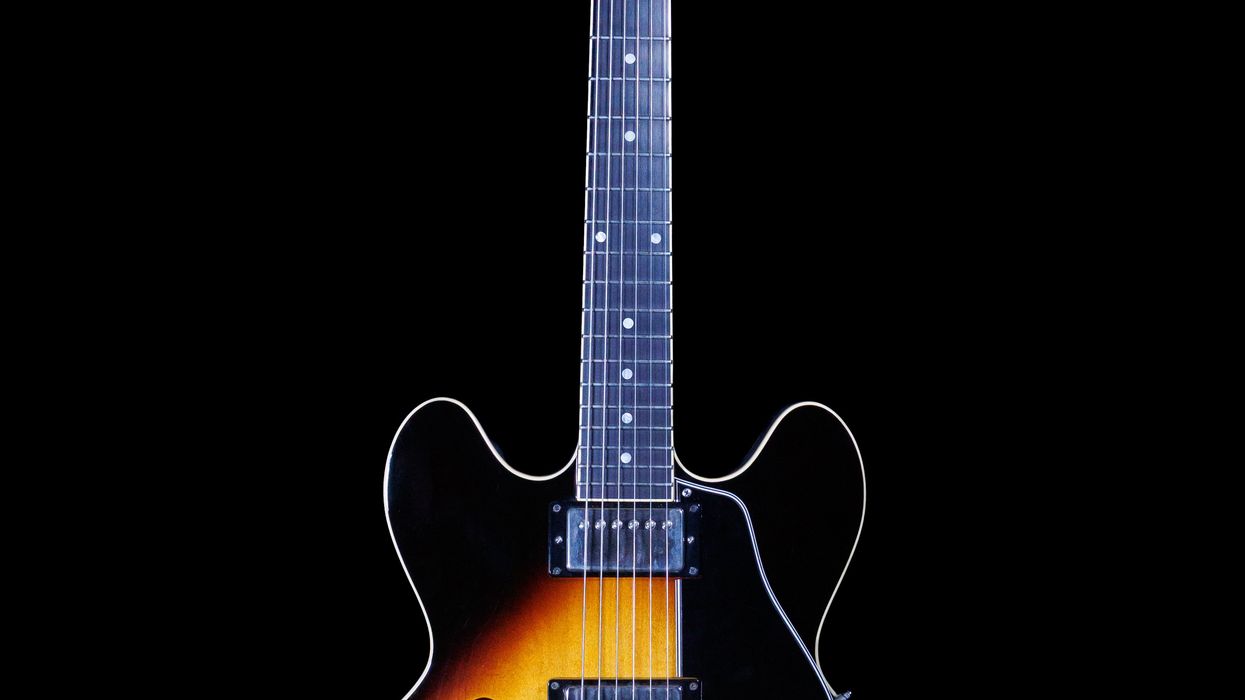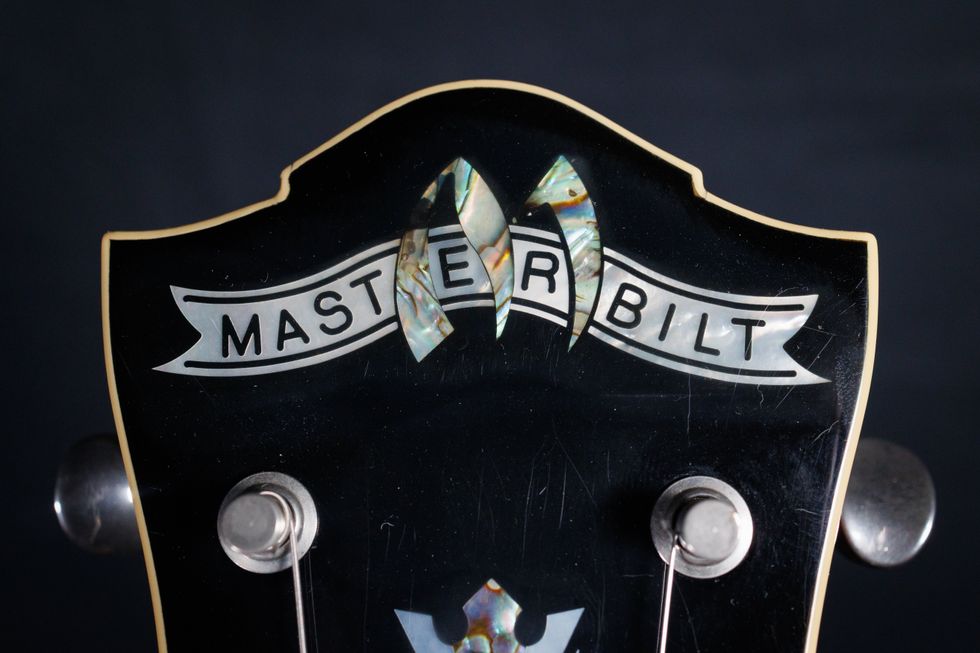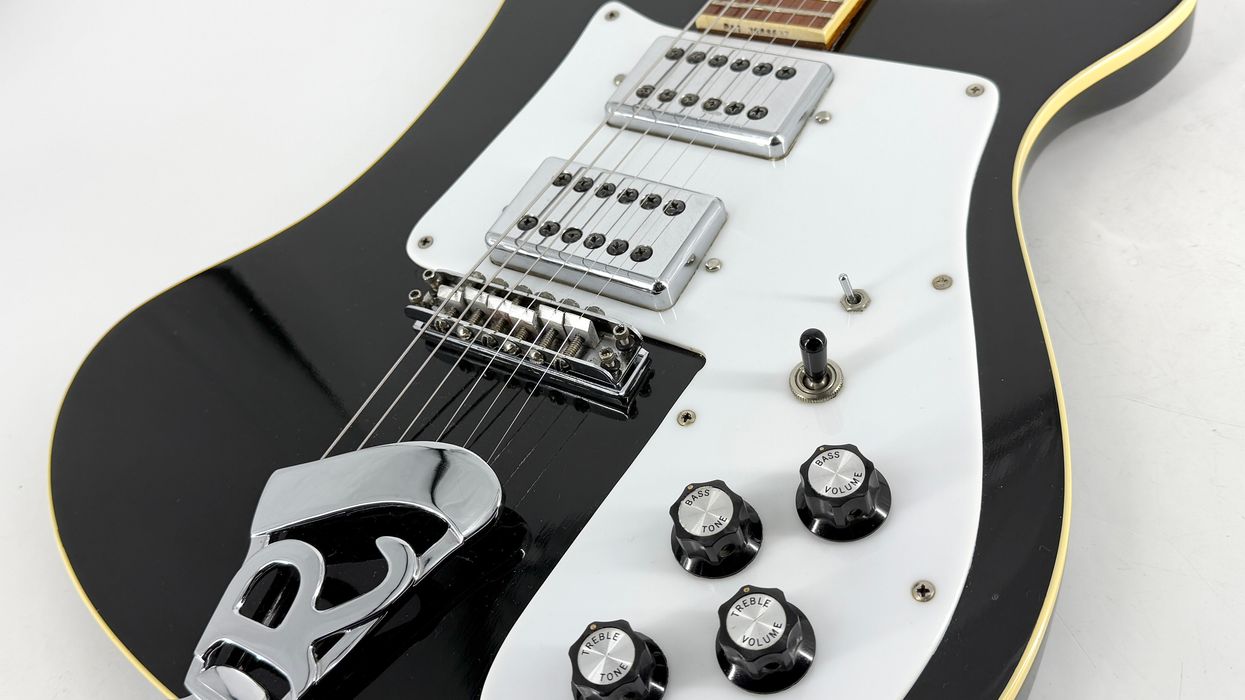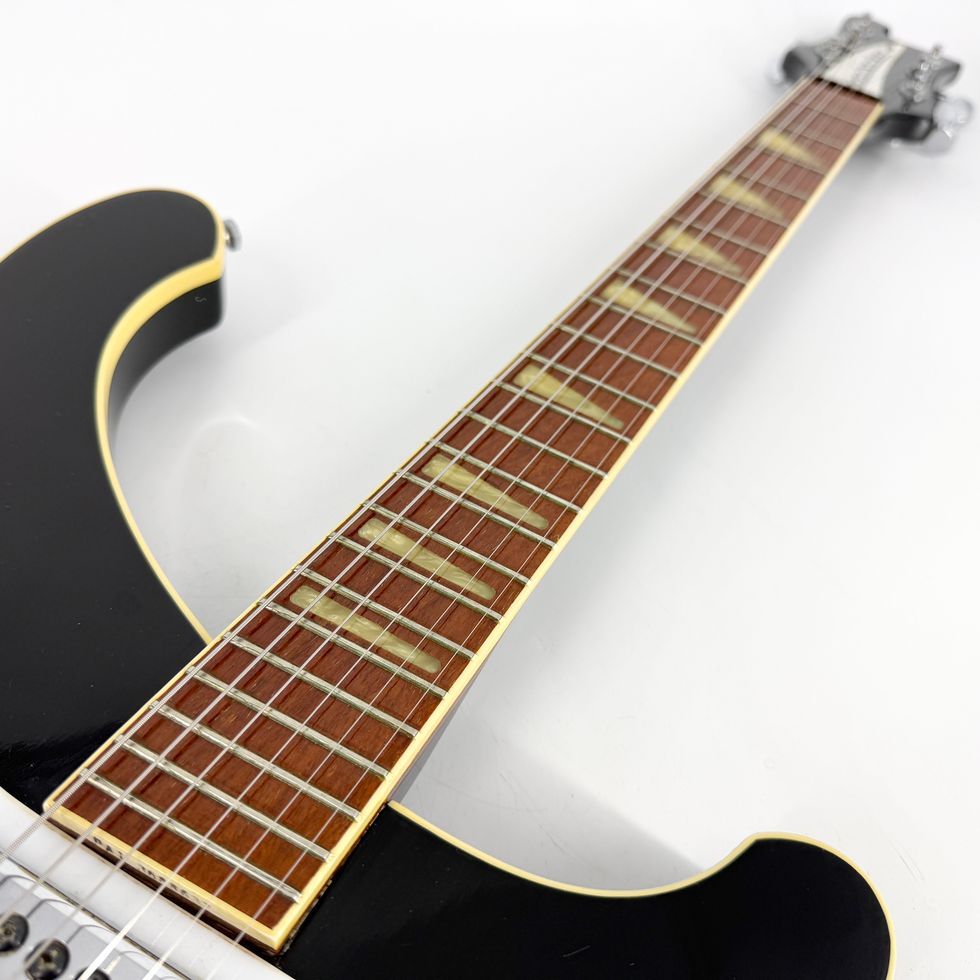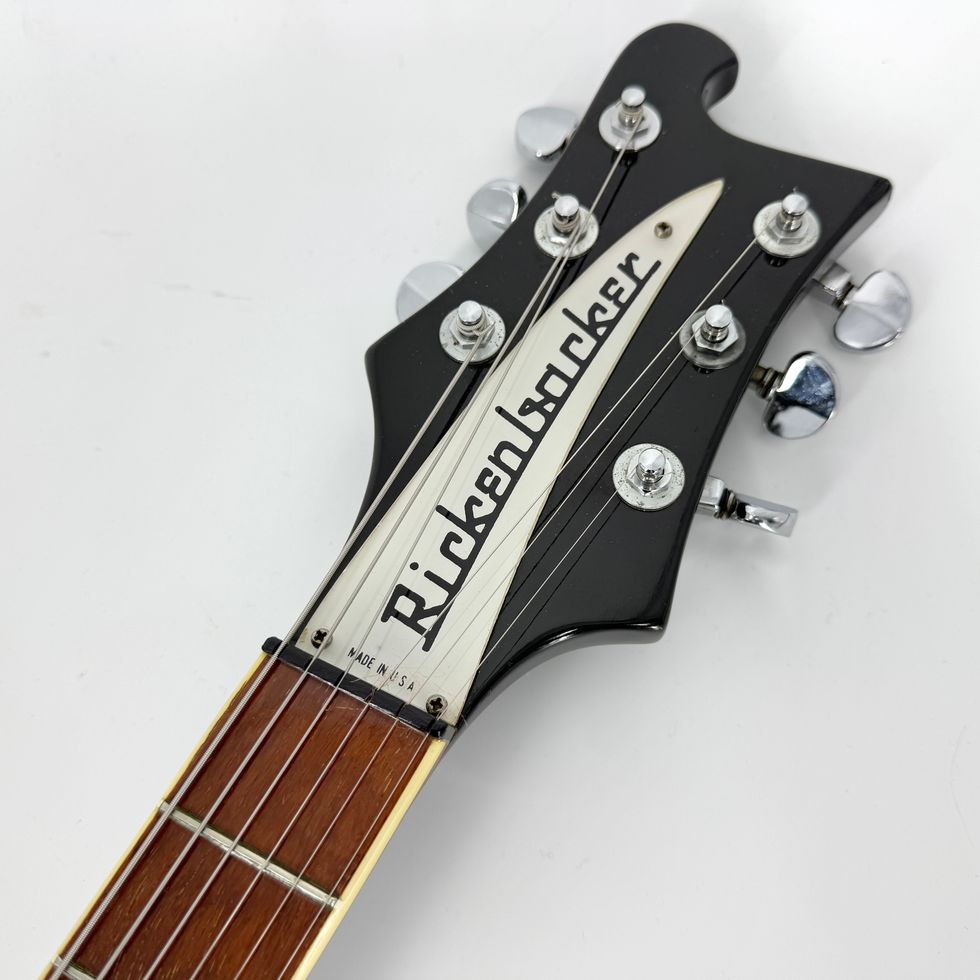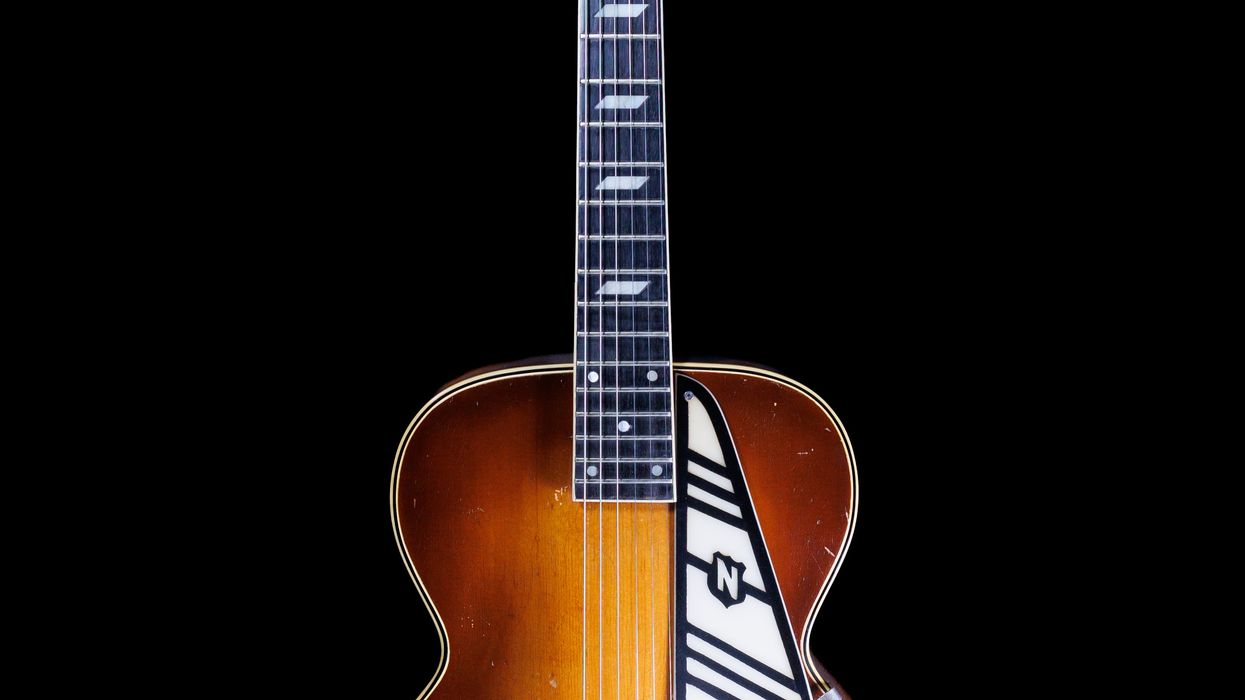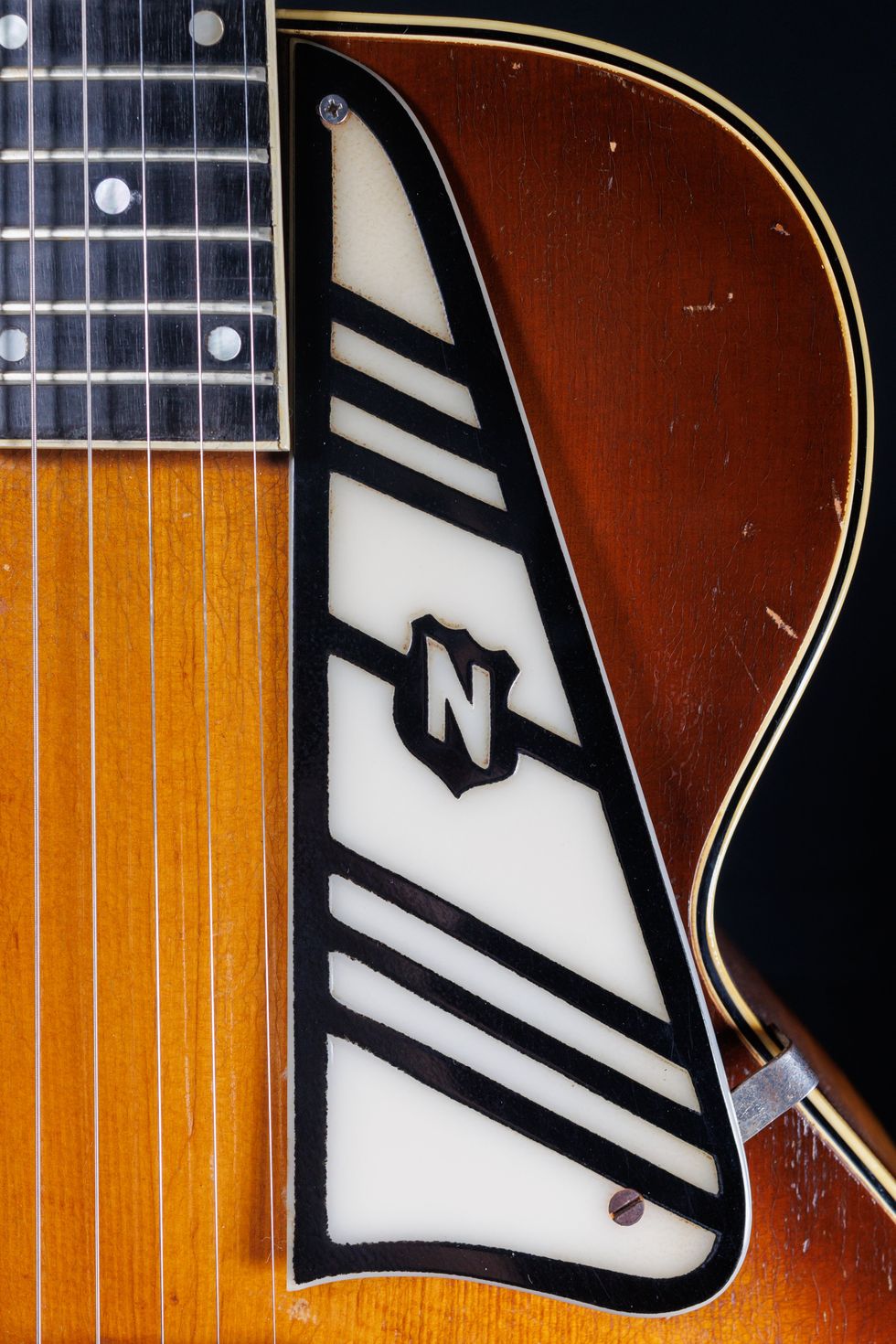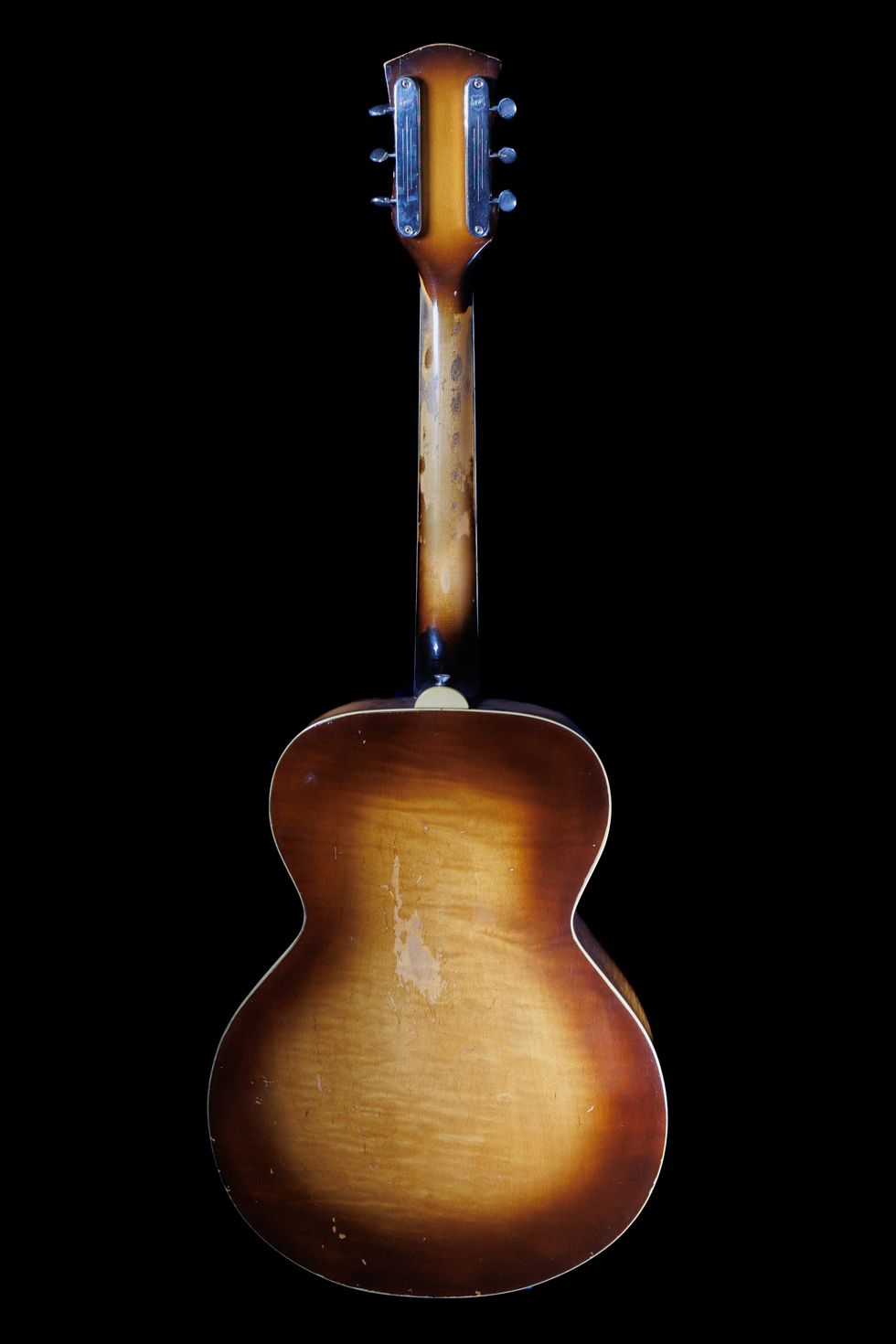Many guitar fans obsess over the “classics,” but I’ve always been more drawn to the obscure underdogs, especially those designed by England’s James Ormston Burns. Sometimes called the “British Leo Fender,” Burns’ success was comparatively minimal, but he left behind many interesting, if often quirky, instruments. The original Burns London company started in 1959, was bought out by the American Baldwin Company in late 1965, and shut down just a few years later. Few guitars with the Burns logo ever made it to the U.S., but many of his models were available here, branded Ampeg (1962–’64) and Baldwin (1965–’69).
This Virginian is one of the rarest, and oddest. Appearing at first glance to be an amplified (possibly hideously modified) flattop acoustic, it is actually a purpose-built electric. Introduced in 1965, it was one of Jim Burns’ final designs for his original company. This early 1965 example came over to me from the original owner’s family in the U.K., who taped the case shut, slapped on a label, and gave it to Parcelforce, hopefully with a nice “Cheerio!” Amazingly, it arrived in one piece and remains in excellent condition, except for an added string retainer on the headstock.
The Virginian evolved from an earlier Burns semi-acoustic, the GB65. That model used the same laminated mahogany body and flamed sycamore top, with eccentric twin f-holes and a trapeze tailpiece. Compared to the GB65, Burns substituted on the Virginian a decorative, round central soundhole—but the primary difference between the two designs is the patented Rezo-Tube bridge, developed as the vibrato system for the 1964 Hank Marvin solidbody. Each string terminates in an individual tube, hence the name, inside a cavity in the body isolated completely from the wood. Burns claimed that it “gives the string tone a new degree of resonance and sostenuto” (i.e., sustain).
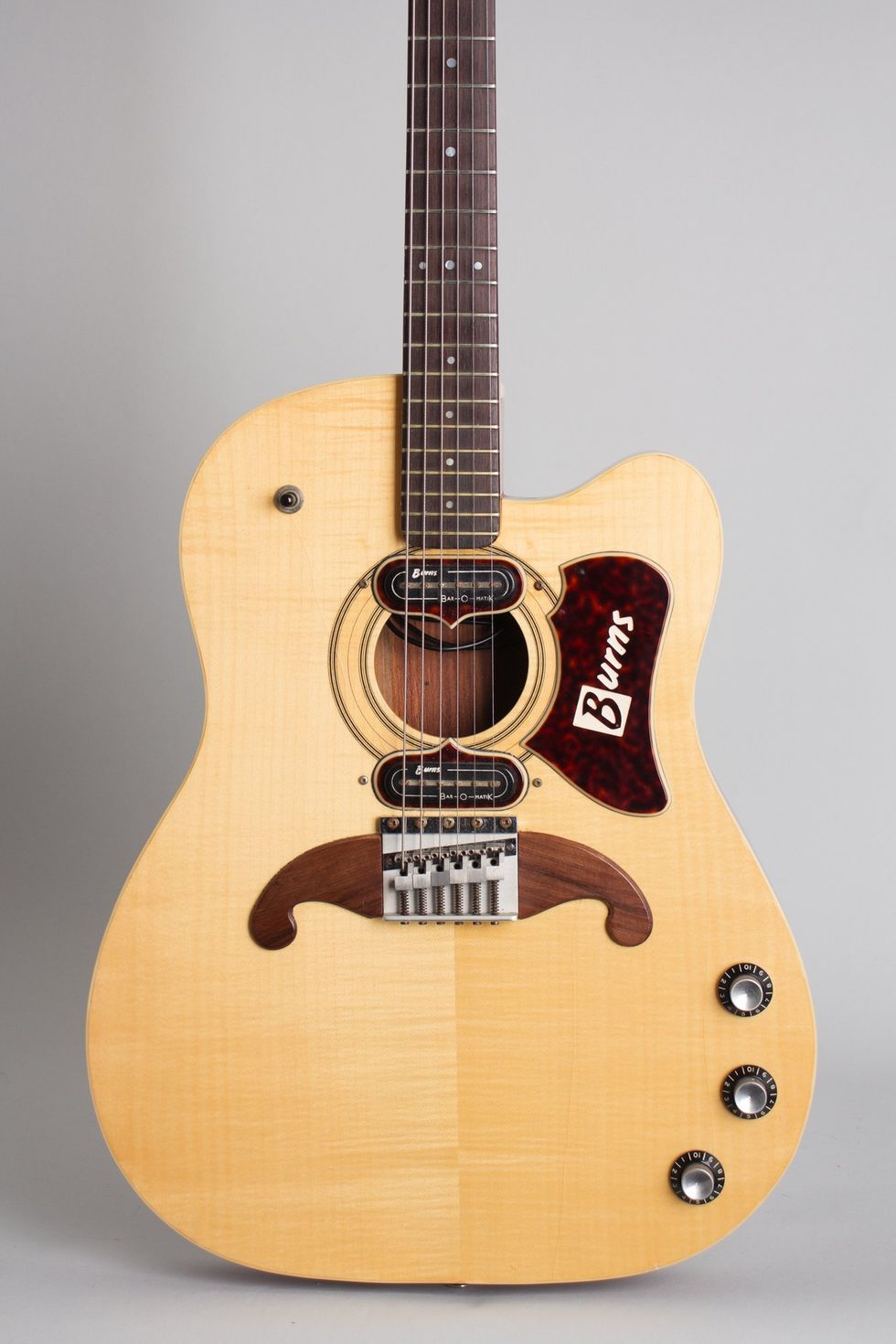
The Virginian is built with Burns’ patented Rezo-Tube bridge, designed for the ’64 Hank Marvin solidbody, where each string terminates in an individual tube inside a cavity in the body.
Photos by George Aslaender
Burns was so pleased with the Rezo-Tube that the Virginian was designed around it, but here, the concept seems a bit counterintuitive. A large solid block under the bridge has a central opening; six strings in individual metal tubes hang down therein. The bridge is spring-suspended on a knife-edge pivot but not intended to move, having no vibrato arm. To top it off, decorative rosewood pieces are mounted either side, mimicking a flattop bridge. Despite a (mostly) hollow body, the Virginian has minimal acoustic sound, thanks to solid blocking around the Rezo-Tube. The natural-finished, bolt-on maple neck has a 24 3/4"-scale rosewood fretboard and the “scroll” headstock—also designed for Hank Marvin. As with most Burns designs, adjustment for the geared truss rod is hidden under the neck plate.
“The Virginian usually inspires a ‘huh?’ reaction—or at least a raised eyebrow—from any player that sees it.”
The Virginian featured Jim Burns’ newest 1965 Bar-O-Matic pickups. The wiring rig sports a major innovation Burns called the “density” knob. The knob blends in the lower coil of a stacked humbucker in the neck position, an original and early use of this concept. The simple-looking controls often baffle a first-time user; the forward knob is volume, with density in the middle and tone at the rear, which also works only on the neck pickup. There are effectively two tone controls for the neck pickup, none for the bridge, and a 3-way switch.
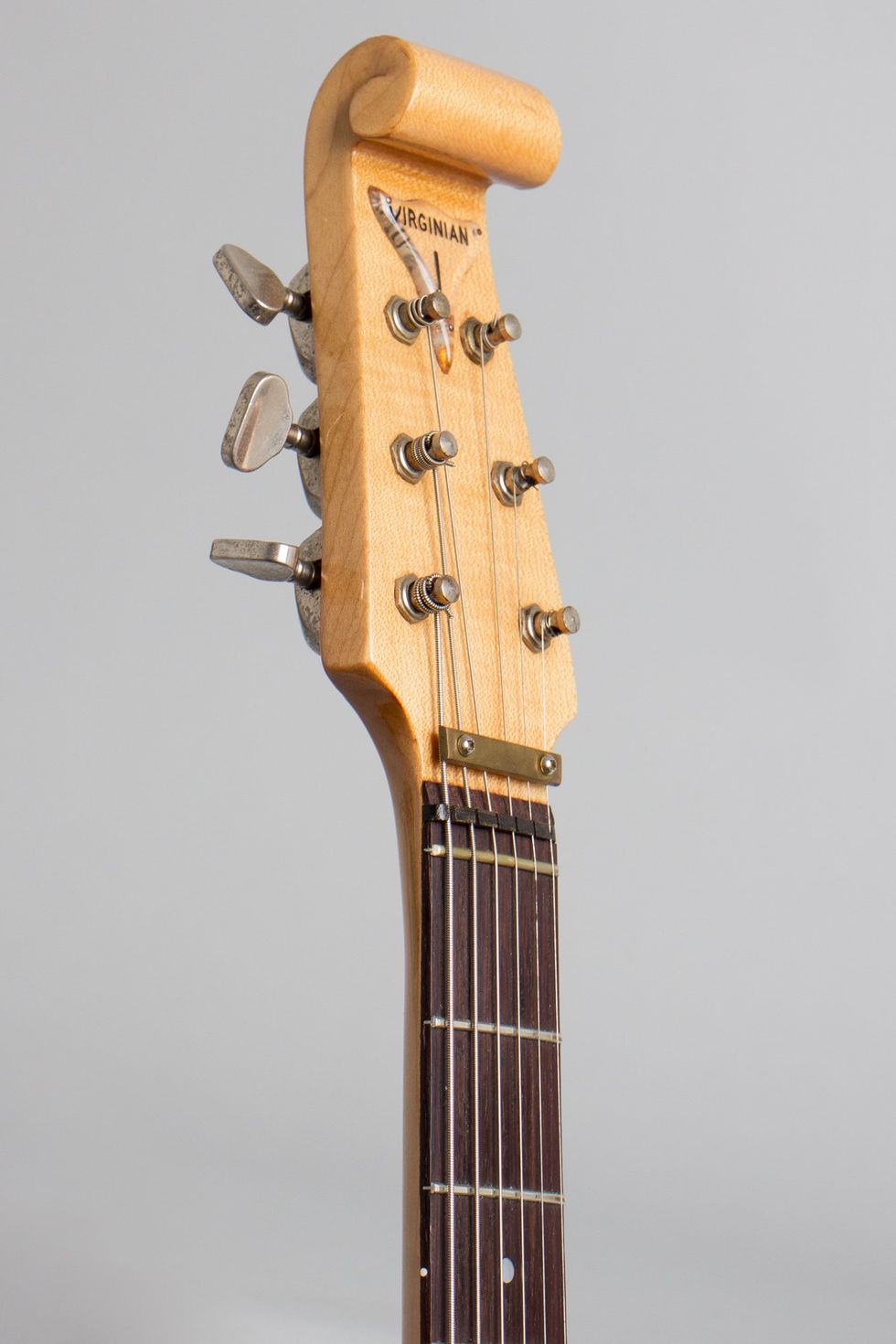
The guitar’s scroll headstock, seen here, was also designed for Marvin.
Photos by George Aslaender
Jim Burns seemed especially proud of this design, the initial ad touting, “Controlled Resonance technology … incorporates the Burns Rezo-Tube bridge/tailpiece developed for the Shadows.” The 1965 U.K. list price was £134, in the same range as many imported Fenders and Gibsons. Despite Burns’ gung ho, the Virginian seems a bit like a guitar in search of a mission. The name implies country Western, but the publicity highlighted “true jazz guitar tone! A real thick, full sound that explodes without ‘woolly’ trimmings with the unique density control.” It’s unlikely much serious jazz got played on Virginians, but one did appear with Lenny Breau in the 1960s. It also was played by a few 1965 U.K. chart acts: Unit 4 + 2, Pinkerton’s Assorted Colours, and even the Troggs.
The Virginian became Baldwin’s Model 550, listed at the rather non-bargain price of $495 (plus a $55 case). They reasoned that if you’re going to put in a vibrato, you should give folks an arm to shake—so later Virginians do have a whammy bar, along with other small changes. Baldwin had a Nashville operation tied in with Sho-Bud, so a few country stars, including a young Johnny Paycheck, got one. Baldwin Virginians were sold from 1966–’69, but first-generation 1965 Burns examples are rare—even in England. The Virginian usually inspires a “huh?” reaction—or at least a raised eyebrow—from any player that sees it. There’s something endearingly goofy about its hybrid appearance, but this is a solid player, handling well with a bright, clear sound for a full-size hollowbody. Jim Burns re-engineered the concept in the ’70s into the Steer model (a favorite of Billy Bragg), but the original Virginian remains unique, and has never been reissued.


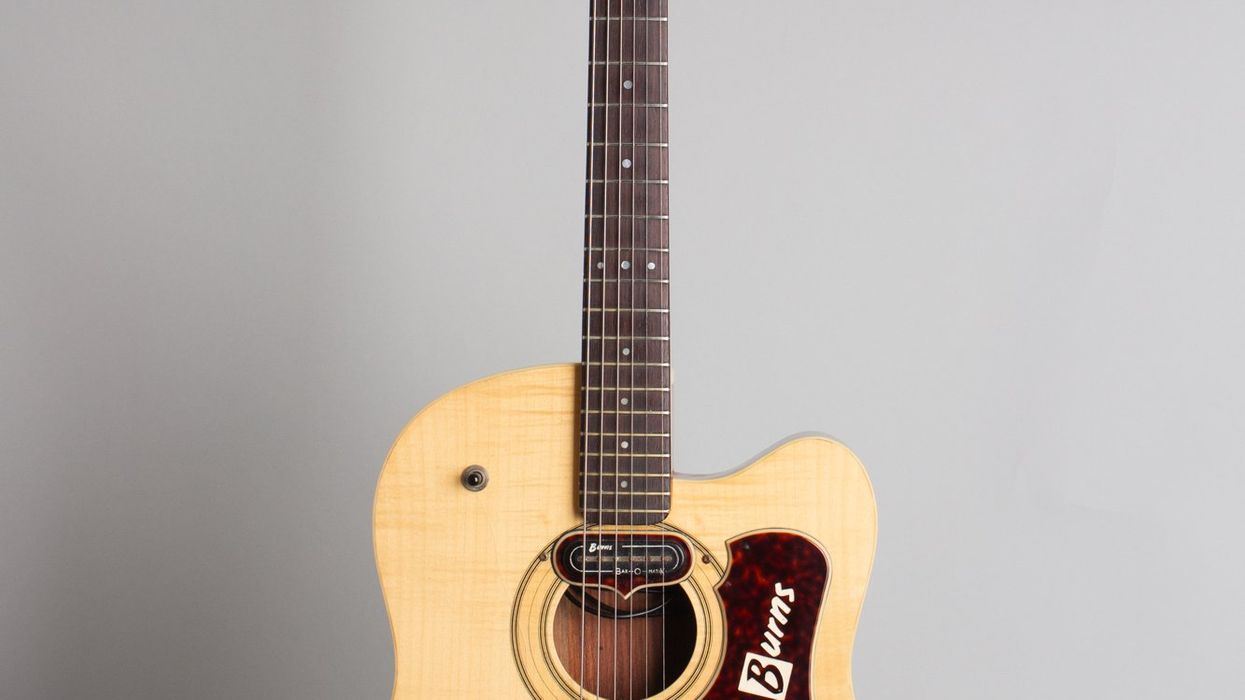

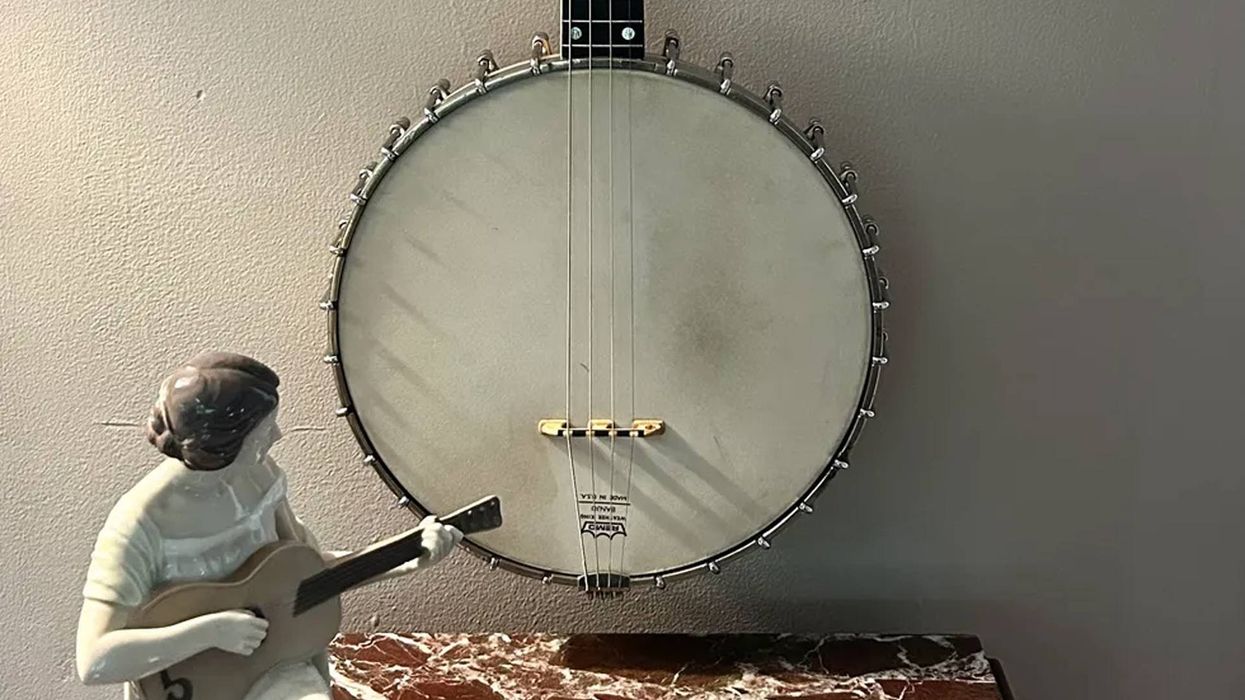
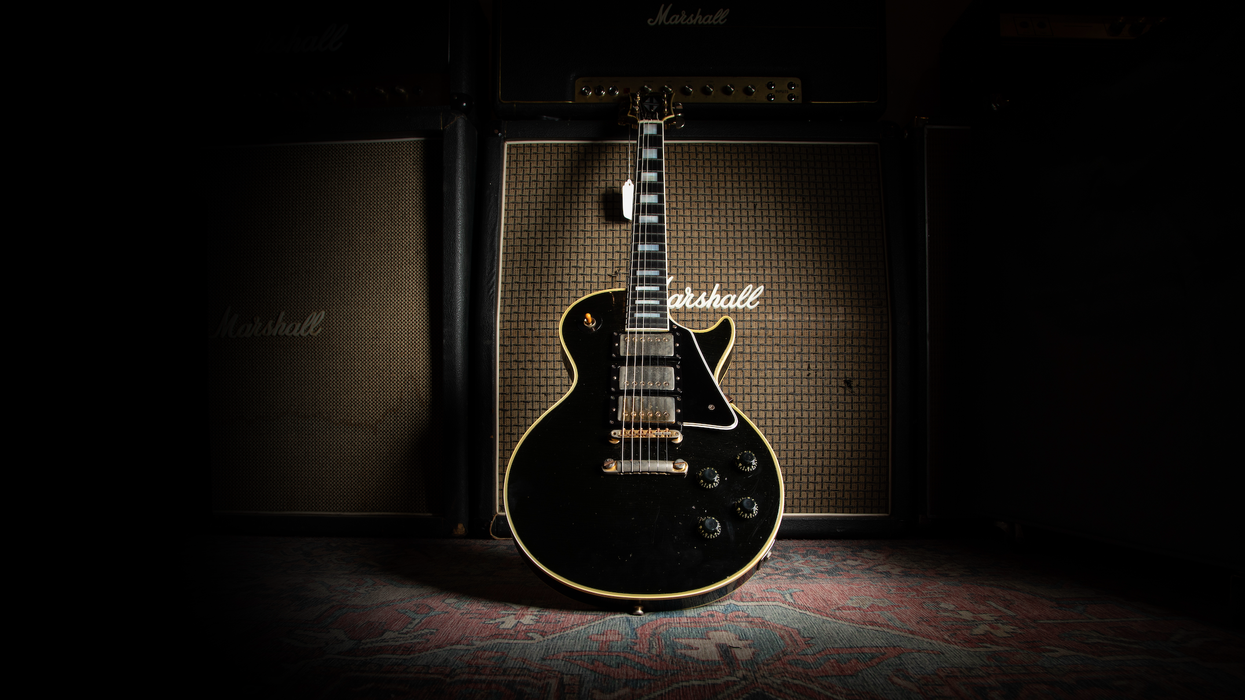
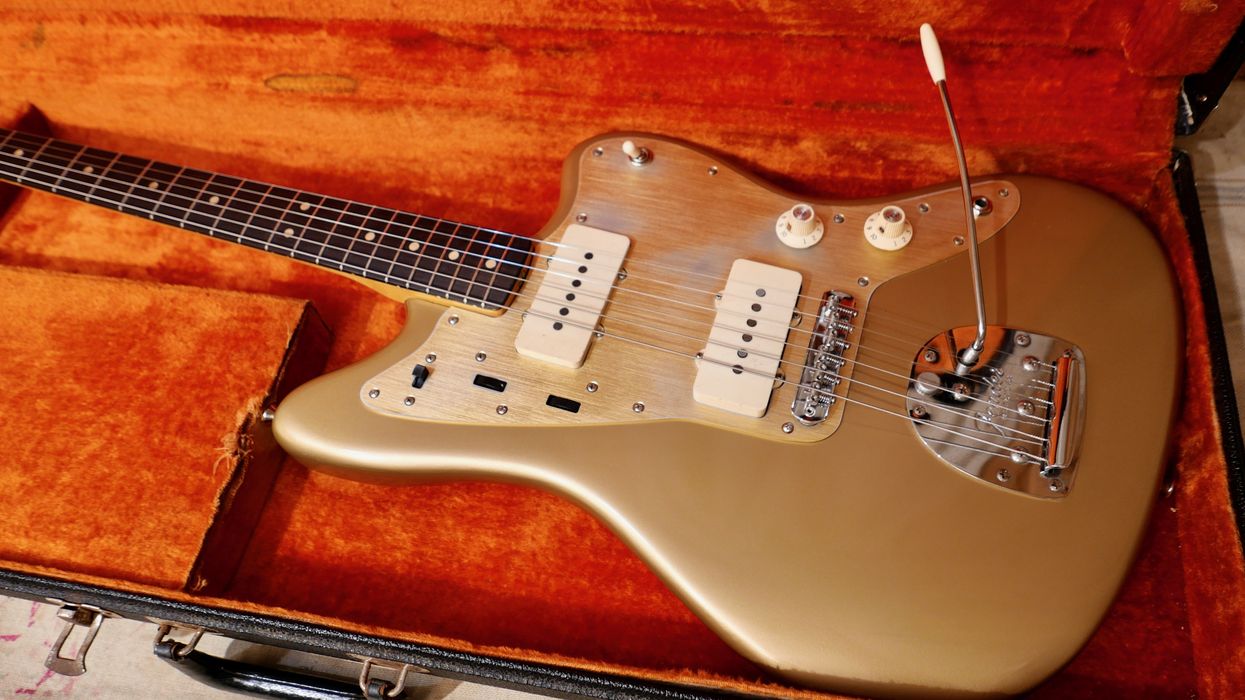
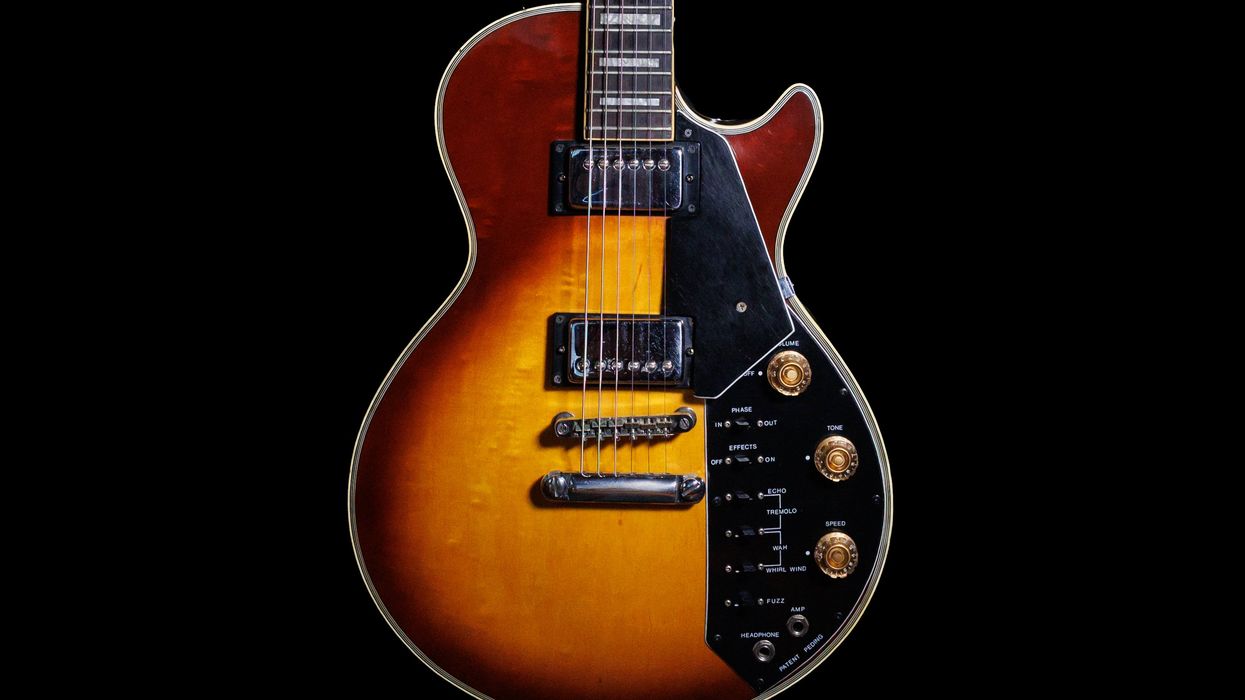
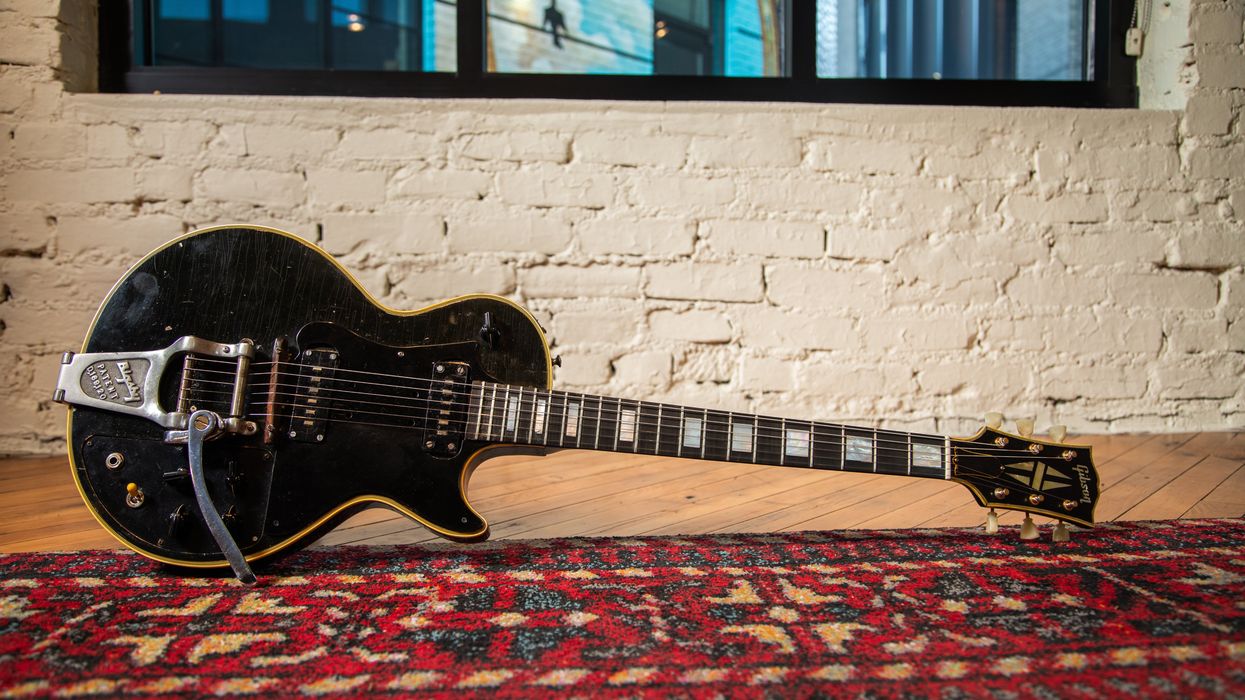
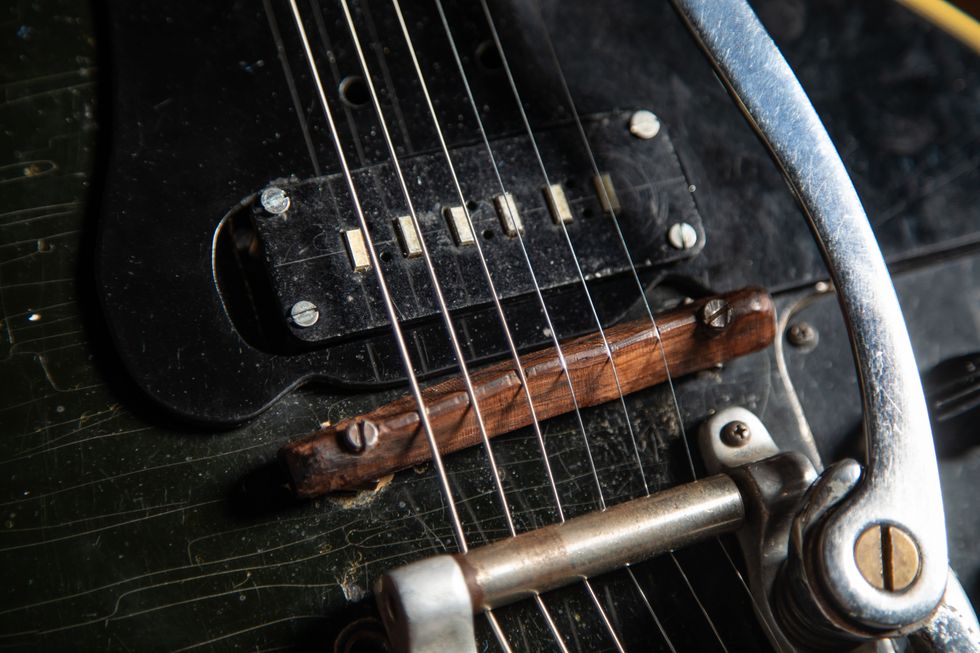






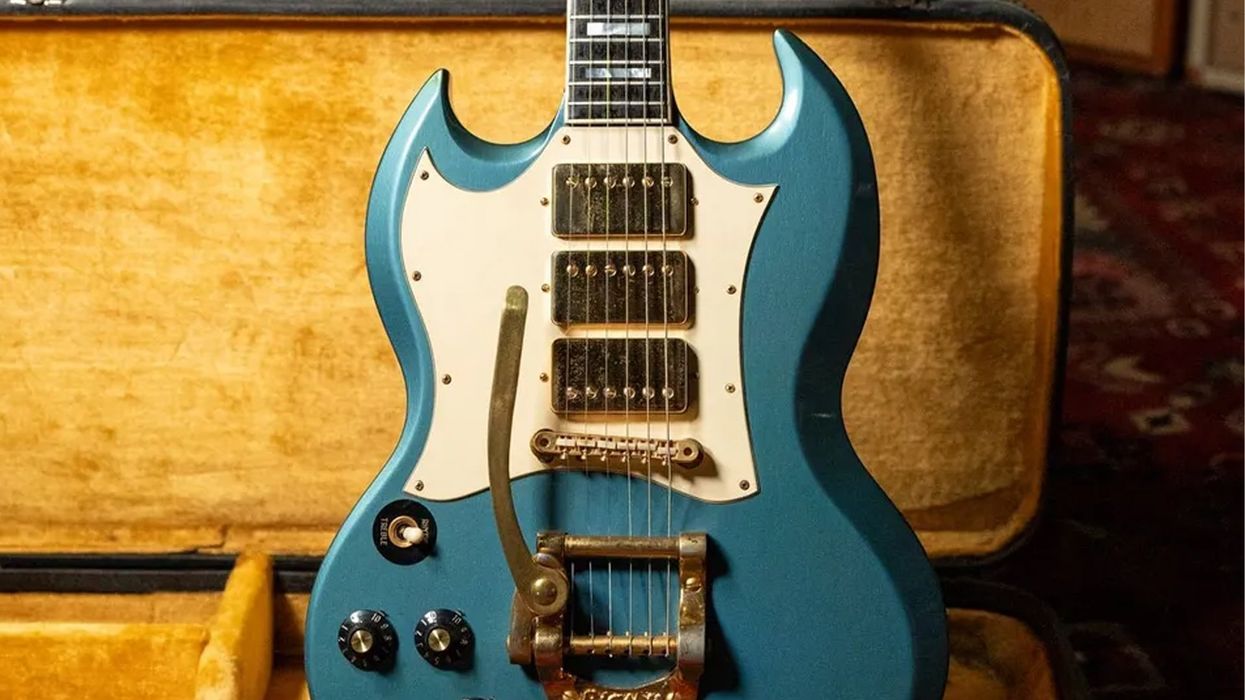
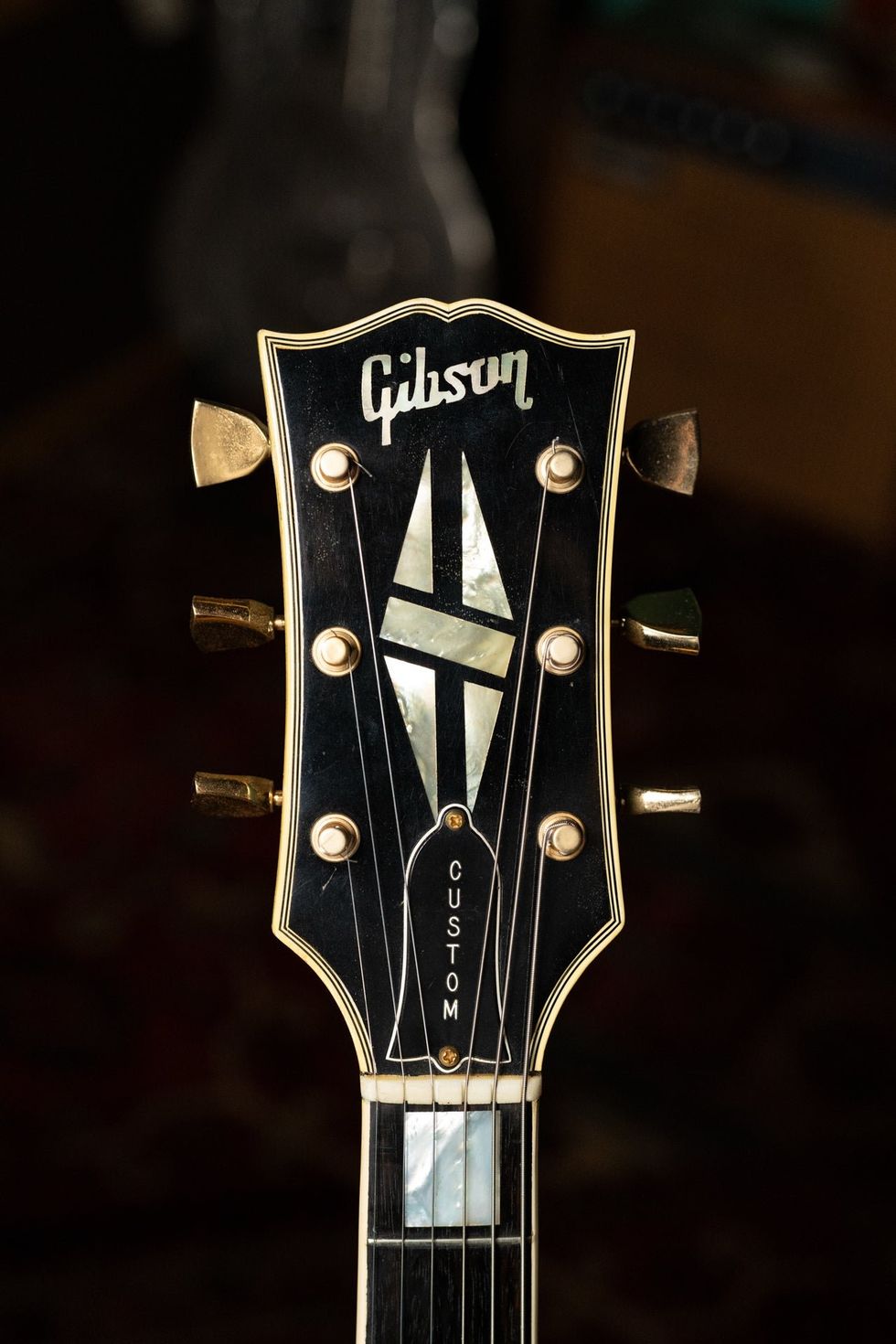
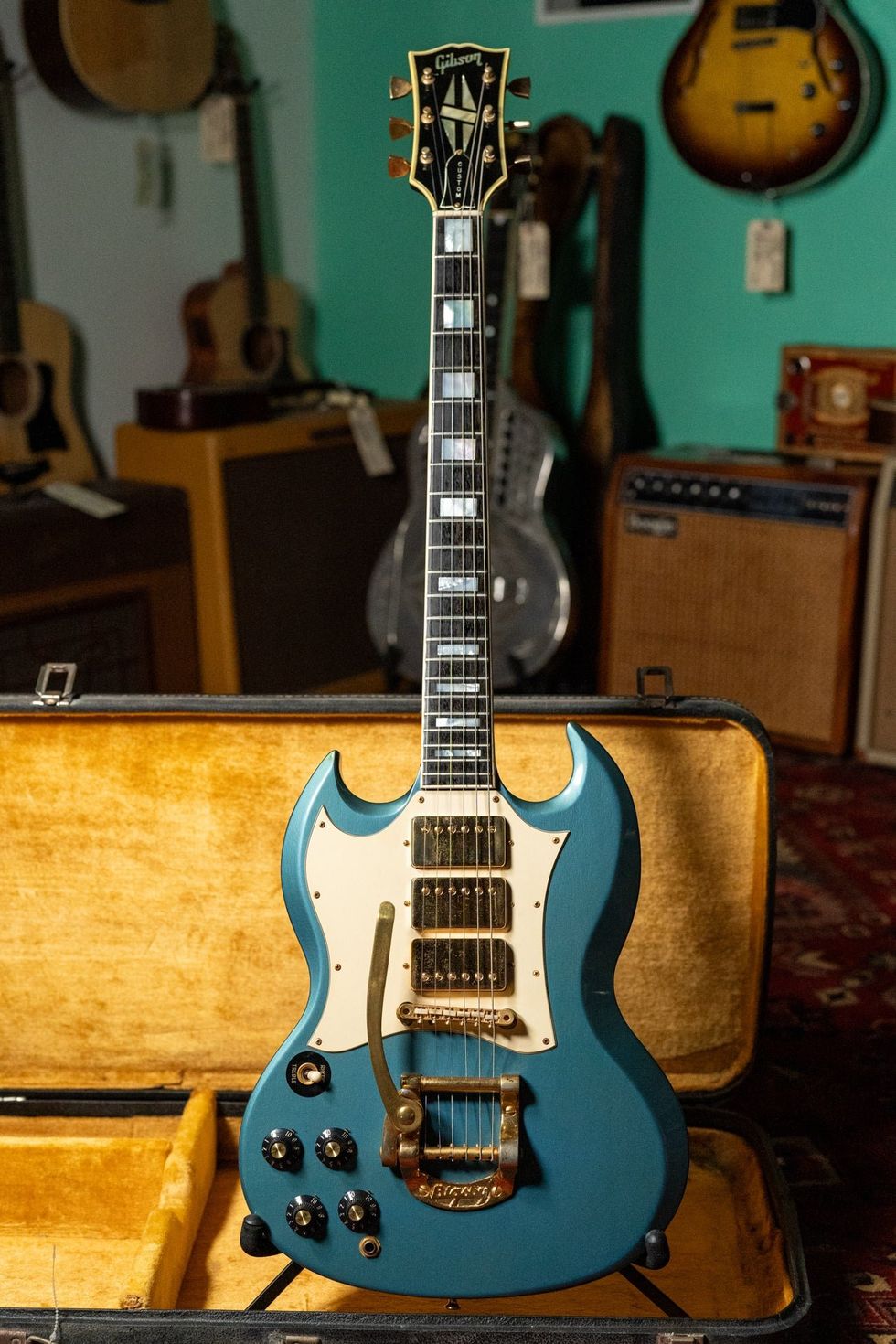 Whether or not Jimi Hendrix actually played this guitar might come down to how lucky its buyer feels.Photo courtesy of Imperial Vintage Guitars Reverb Shop
Whether or not Jimi Hendrix actually played this guitar might come down to how lucky its buyer feels.Photo courtesy of Imperial Vintage Guitars Reverb Shop